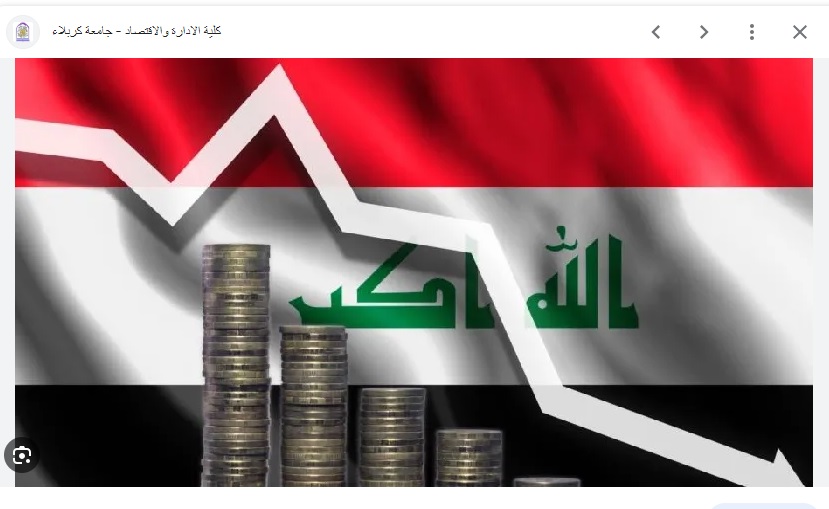POLITICAL STABILITY:
Iraq is experiencing an unusual period of relative calm domestically after almost two decades of turmoil, characterised by a notable decrease in political violence and the formation of a comparatively cohesive government led by the prime minister, Mohammed Shia al-Sudani, in October 2022. With support from a majority of parliamentary factions led by the Co-ordination Framework (CF), an Iranian-backed Shia bloc, the government passed an expansionary 2023-25 budget in June, and is expected to pursue additional economic and political reforms in the coming months. However, government functionality will remain contingent on parliamentary support from restive Kurdish and Sunni parliamentary parties, both of which will continue to leverage their backing to gain policy concessions. If these are not given this may result in the withdrawal of their support for the government, hampering policy formulation and implementation.
ELECTION WATCH:
The October 2021 election produced a divided parliament, delaying the formation of a government for a year. Mr Sudani has pledged to hold a fresh election within a year of his appointment (which would be October 2023). However, EIU expects security issues, such as an uptick in civil violence, and logistical challenges to delay the election until at least 2024. High levels of polarisation and unrest are likely, especially as the new electoral law favours larger established parties that lost ground to populist candidates in 2021. Government-aligned groups are also expected to benefit from targeted government spending, including cash handouts and subsidy increases, under the 2023-25 budget. Gains made by opposition parties and independents in the October 2021 election are likely to be reversed at the next election, compounding heightened public disillusionment with Iraq’s political system.
INTERNATIONAL RELATIONS:
In 2023-27 Iraq will seek to maintain a neutral stance in its relations with its major allies, the US and the Gulf Arab states on the one side and Iran on the other. Iraq wants to reduce the risk that it will become an even bigger battleground for Iran’s conflicts with its various regional and international antagonists (especially as Iran exercises considerable influence in Iraq). An agreement between Saudi Arabia and Iran to restore diplomatic relations has negated the risk of a rift with Saudi Arabia over ties with Iran in the short term. In this environment, we expect ties between Iraq and the Gulf states to continue to expand, centred around trade and investment agreements, in Iraq’s renewable energy and gas sectors in particular. However, this arrangement will remain precarious and prone to collapse throughout 2023-27; such a collapse would again complicate the political and security environment for Iraq.
POLICY TRENDS:
Policymaking during Mr Sudani’s time in office will lack credibility and consistency, and Iraq’s economic recovery will remain vulnerable to setbacks. The Ministry of Oil aims to boost oil output to 6m barrels/day (b/d) by 2027, down from its previous target of 8m b/d. Infrastructure upgrades and debottlenecking work as part of Iraq’s US$27bn trilateral investment agreement with France’s TotalEnergies and Qatar’s Qatar Energy, which was signed in July, reportedly have the potential to more than double Iraq’s oil output by 2029. However, the lower target (which is 34% higher than 2022 production levels) is still unlikely to be met. We expect that major projects will remain beset by delays, given endemic corruption, bureaucratic mismanagement and Iraq’s volatile political environment, curtailing the uplift to output during 2023-27.
ECONOMIC GROWTH:
Iraq’s energy sector, which accounts for about two-thirds of GDP, will continue to drive economic growth during 2023-27. Average oil production will fall by 7.5% in 2023, to 4.1m b/d, prompting a contraction in export volumes and in government consumption and underpinning a 1.4% contraction in real GDP. We forecast that growth will rebound to 4.5% in 2024 as oil production picks up. However, major downside risks to rising output persist, including potential attacks on oil infrastructure and the possibility of the bulk of output in Iraqi Kurdistan (averaging 375,000 b/d) remaining offline if the legal dispute between Iraq and Turkey rumbles on into 2024. Average growth during this period would be higher if the economy were not plagued by an unstable security environment, water shortages and unreliable power supplies.
INFLATION:
We expect inflation to fall but remain elevated at an annual average of 3.7% in 2023-24, then decline further, to an average of 1.9% in 2027. A decline in global commodity prices during 2023-27 will be partly offset by the inflationary impact of a sharp rise in government spending on welfare and job creation, boosting consumer demand. However, there remains a high risk of inflationary pressures mounting throughout the forecast period, possibly stemming from severe drought and reduced agricultural output. The small size of the domestic manufacturing and agricultural sectors underpins Iraq’s exposure to fluctuations in global goods and commodity prices, presenting an enduring source of price volatility.
EXCHANGE RATES:
In February the Central Bank of Iraq revalued the official currency peg to ID1,300:US$1, from ID1,450:US$1 (which was set in December 2020), supported by current-account surpluses and sizeable foreign-exchange reserves. We expect Iraq’s current-account surplus and available foreign-exchange reserves to fluctuate during the forecast period, tracking shifts in oil export revenue, but to remain more than sufficient to support the current exchange rate. A further revaluation of the official rate may take place in 2024-27 as political pressure to further reduce import costs remains high.
EXTERNAL SECTOR:
The trade and current-account positions in 2023-27 will be determined largely by the level of oil export revenue and by rising import volumes due to surging government spending. We expect that after two years of extraordinary growth export receipts, mainly from crude oil, will contract by 30% in 2023 as global energy prices fall, output decreases and the revaluation of the official exchange rate reduces the local-currency value of Iraqi exports. Combined with higher import costs as the government ramps up current and capital expenditure, this fall in export revenue is expected to sharply reduce the current-account surplus in 2023, to 2.9% of GDP, from 15.6% of GDP in 2022.
Source: Economist Intelligence Unit








Comment here